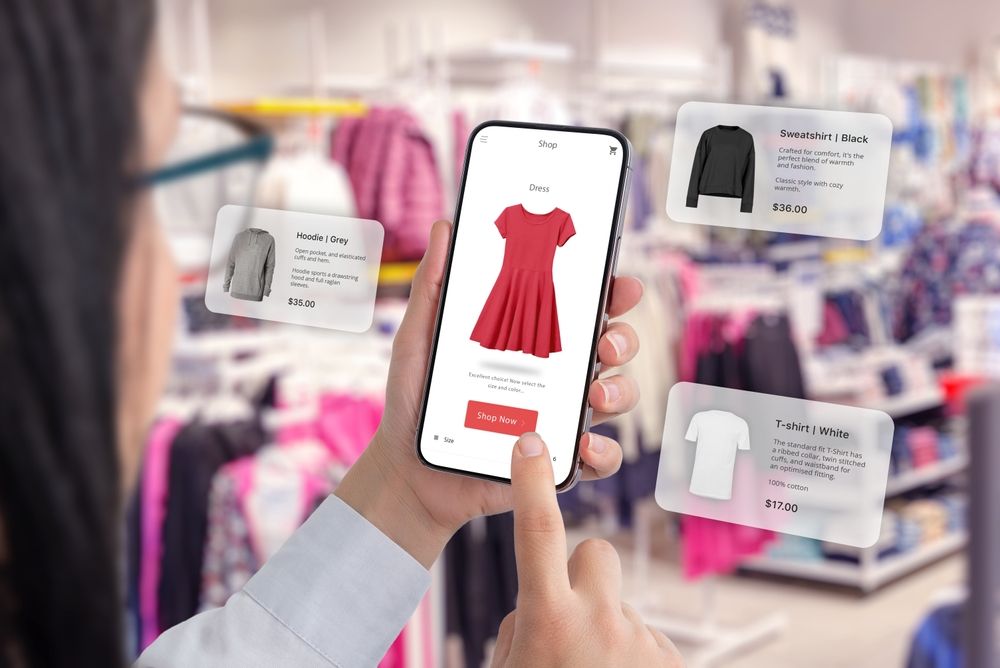Why Retailers Should Invest In The Resale Market

In recent years, the resale market has surged in popularity, and it’s not just a fleeting trend. According to ThredUp, the secondhand market is poised to double in size over the next five years, reaching a staggering $77 billion by 2025.
This explosive growth is driven by evolving consumer preferences and the increasing prominence of online resale platforms. As the landscape of retail continues to shift, investing in the resale market is becoming not just an opportunity but a strategic necessity for retailers.
The Growing Resale Market: Key Statistics
ThredUp’s forecasts show that by 2025, sales of secondhand clothes are expected to make up about 10% of the entire global clothing market. This is a big deal because it means secondhand shopping is becoming much more popular. What’s even more impressive is that half of all spending on secondhand items will be done online. This trend is growing fast: in 2023, 63% of people who bought secondhand clothes did so online, which is a 17% increase from the year before.
Also, younger shoppers, especially Gen Z and millennials, are driving this change. About 45% of these age groups prefer to buy secondhand items online. This shows that more people are shifting their shopping habits toward online resale. Retailers should pay attention to this trend because it highlights how important it is to offer secondhand options online to meet the needs of today’s consumers.

The Benefits of Investing in the Resale Market
Tapping into a Booming Market
The growing resale market is a great chance for retailers to boost their profits. ThredUp’s data shows that this market is expanding quickly, which means there’s a lot of money to be made. As more people choose to buy secondhand items, retailers have the opportunity to get a share of this growing pie. By adding resale options to their business, they can tap into this new source of revenue.
Incorporating resale strategies can help retailers mix things up and find new ways to make money. Instead of relying only on selling new items, they can attract customers who are interested in secondhand goods. This not only helps them earn more but also lets them be part of a popular and expanding market. By being part of the resale trend, retailers can grow their business and take advantage of this exciting opportunity.
Meeting Consumer Demand
Younger consumers, particularly Gen Z and millennials, are leading the change toward online resale. These age groups care a lot about sustainability and are looking for ways to lessen their impact on the environment. They prefer to buy from brands that share these values and offer eco-friendly options. By providing resale options, retailers can connect with these customers who want to shop in a way that’s better for the planet.
When retailers offer resale choices, they show they are committed to sustainability in the retail industry and are in tune with what younger shoppers care about. This can help attract a loyal customer base that values being environmentally responsible. As more people choose to support brands that contribute to reducing waste and promoting recycling, retailers who embrace resale can stand out and build strong, lasting relationships with eco-conscious consumers.
Building Brand Loyalty
Retailers who put money into resale can build stronger connections with their customers by providing a smooth and eco-friendly shopping experience. For example, well-known brands like Zara and H&M have seen great results from their resale efforts. Zara introduced its ‘Pre-owned’ platform to start making money from reselling used clothes. Meanwhile, H&M teamed up with Sellpy, and this partnership led to an impressive 85% increase in their resale revenue, with a goal of reaching €90 million in 2023. These examples show how investing in resale can boost sales and help brands show their dedication to sustainable retail and forward-thinking.
By offering resale options, retailers create a more engaging shopping experience that aligns with today’s values around sustainability. Customers appreciate being able to buy secondhand items and contribute to reducing waste. This approach not only drives more sales but also strengthens the brand’s reputation for being innovative and environmentally responsible. As consumers increasingly choose brands that support green retailing practices, having a robust resale program can make a brand stand out and build lasting loyalty among shoppers.
Boosting Sustainability Efforts
The fashion industry has come under fire for its negative effects on the environment, including waste and pollution. As a response, retailers can show they care about sustainability by getting involved in the resale market. When clothes are resold, it means less waste because items are used longer instead of being thrown away. This helps create a more circular economy where products are reused and recycled rather than discarded. By supporting resale, retailers can help reduce their environmental footprint and play a part in making fashion more eco-friendly.
This move towards sustainability in retail can also boost a brand's image. Consumers today are more aware of environmental issues and often prefer to shop with brands that align with their values. By promoting resale, retailers can attract these environmentally-conscious shoppers. This not only helps the planet but also builds a positive reputation for the brand. Customers are likely to feel good about supporting companies that take proactive steps to be more sustainable, which can lead to increased loyalty and sales.

Technological Advancements
The growth of online resale platforms is changing the way retailers do business, giving them new technology to use. Sites like Depop and Poshmark have become popular places for buying and selling secondhand items. These platforms help retailers reach more people and make the process of reselling easier. By using these platforms or creating their own, retailers can improve their resale strategies and engage better with their customers.
These resale platforms offer useful features that make selling and buying secondhand items smoother. Retailers can use tools for shipping, payments, and customer interactions. Using these technologies, retailers can make transactions easier and learn more about what their customers want, allowing them to offer better products.
Retailers can also choose to develop their own resale platforms to have more control over their brand and customer experience. This way, they can integrate resale into their existing online stores more easily. It helps build brand loyalty by offering customers a seamless shopping experience for both new and used items. Retailers can add special features like rewards for trade-ins or exclusive resale events to keep customers coming back.
Investing in the resale market is not just a trend—it's a strategic move that can drive growth, enhance sustainability efforts, and align with evolving consumer preferences. Retailers who invest in the resale marketing will be well-positioned for success.
By adapting to the changing landscape and meeting consumer demand for sustainable and accessible fashion, retailers can secure their place in the future of retail.
We’re looking for guest contributors to join our blog and offer fresh perspectives on the latest trends, challenges and innovations in retail.
Whether you’re an industry expert or a thought leader, we’d love to hear from you! Contributing is a great way to showcase your expertise, reach a wide audience and engage with other professionals in the field.
If you’re interested in writing for Pure x JATC, please get in touch and let us know your ideas.
